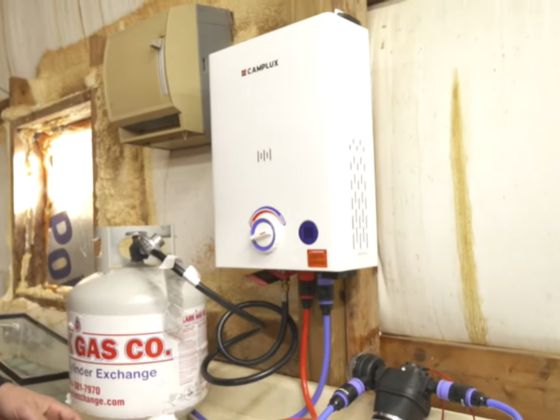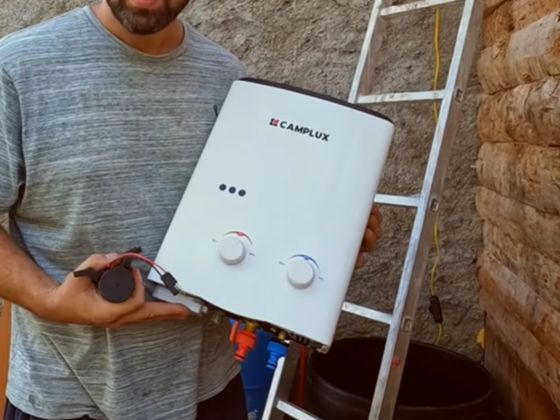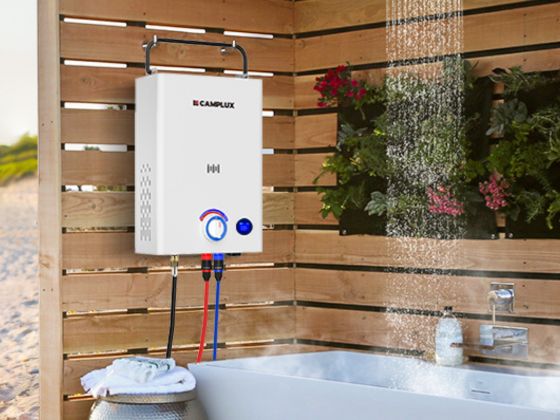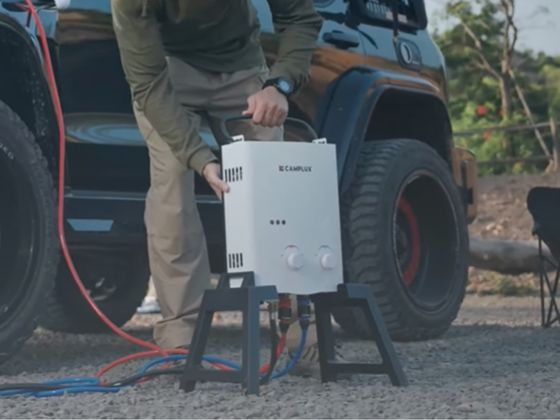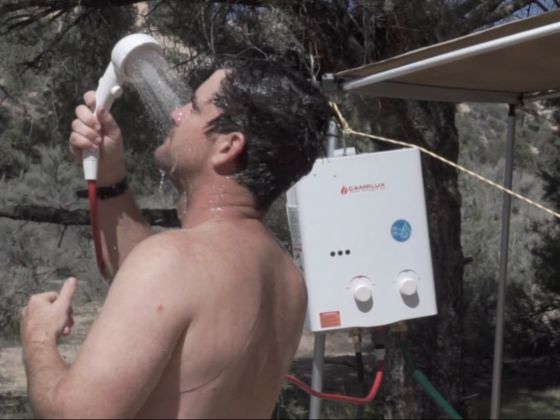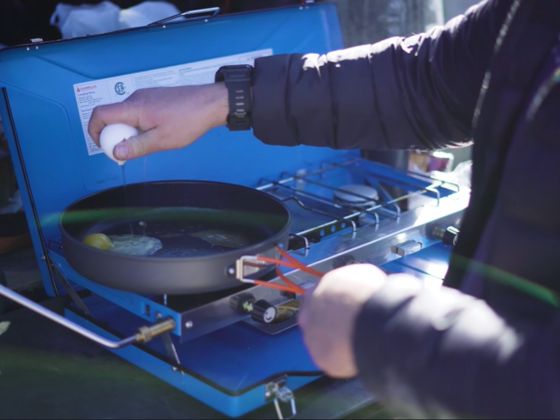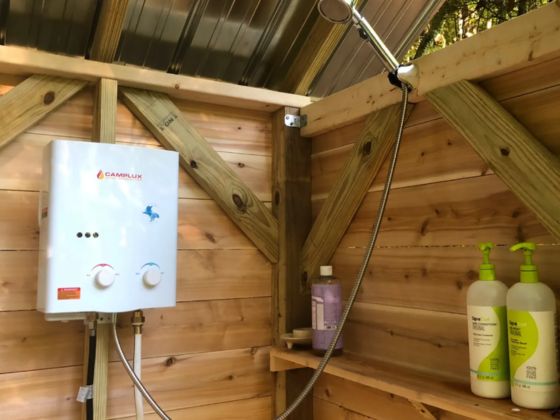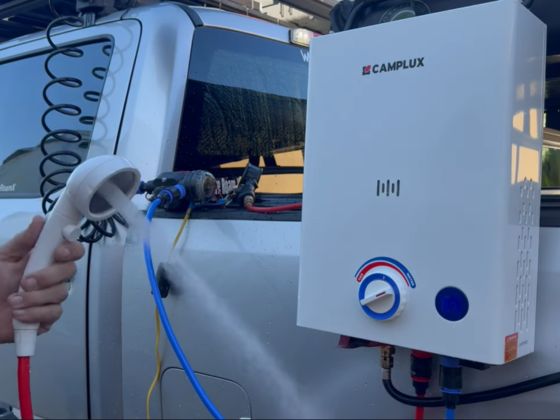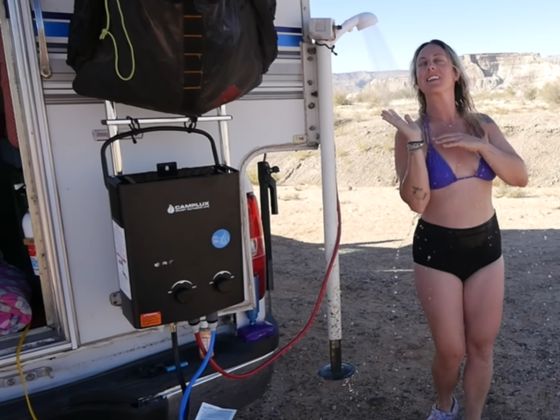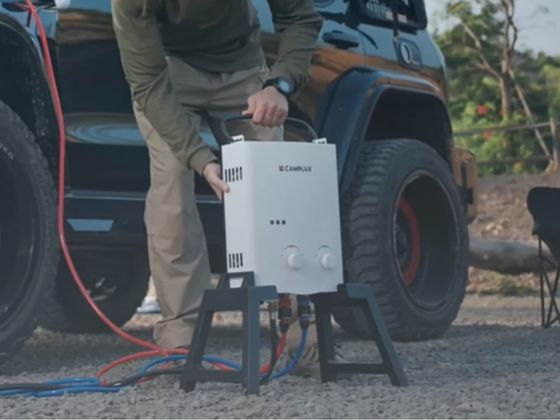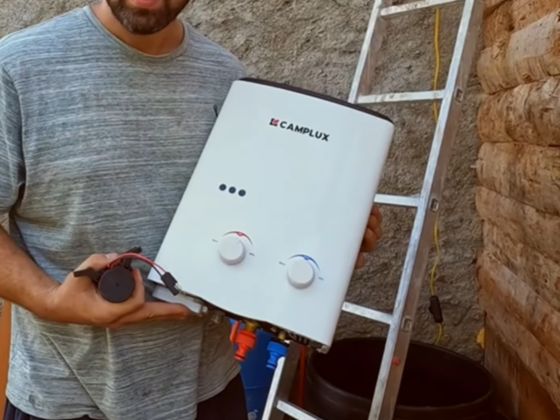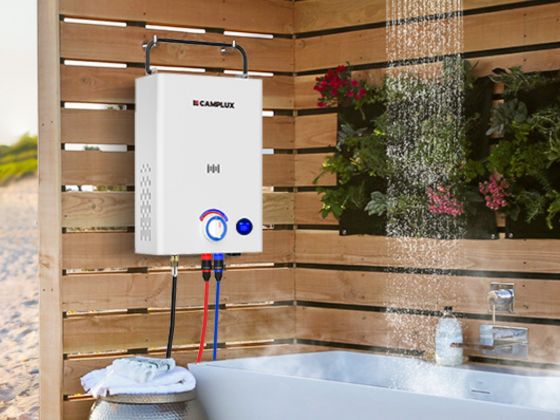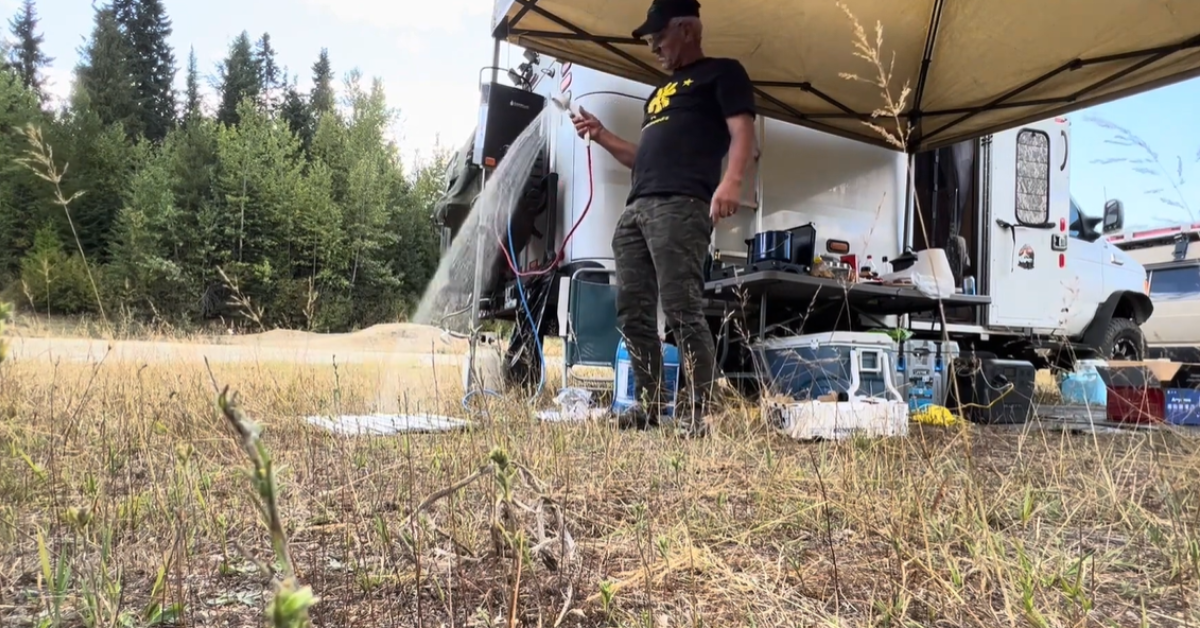Enjoying hot water outside enhances any location. This includes remote areas, campsites, gardens, or rural properties. If a problem arises, you need a straightforward, safe fix. Don't let repairs ruin your weekend. This guide offers a quick safety check. It provides simple solutions for common Australian user problems. It also shows when to contact a qualified professional.
Note on brand mentions: We'll stay brand-neutral. In a few places you'll see short "If your unit has…" notes. If you're using a model that includes those features (e.g., some Camplux units), the problem is often easier to prevent or diagnose.
First: quick safety reminders for Australia
-
Ventilation matters. Gas appliances need fresh air. Never run a gas heater in an enclosed space (e.g., fully zipped shower tent, closed annexe, inside a vehicle).
-
Be CO-aware. Carbon monoxide is odourless and deadly. If anyone feels dizzy, nauseous, or gets a headache, stop, move to fresh air, and seek help.
-
Treat gas like gas. If you smell gas, shut the cylinder, move away from ignition sources, ventilate, and check with soapy water.
-
Know your limits. Portable units: basic checks are fine. Fixed installations and hard-piped gas work must be done by a licensed gasfitter.
-
Hot surfaces & scalding. Keep kids and pets back; test water with your hand before stepping under the shower.
One-minute fault cheat sheet
-
No hot water / no ignition → Gas on? Cylinder not empty? Fresh batteries? Sufficient water flow? Air and exhaust unblocked?
-
Lights then dies → Wind gusts? Flue/exhaust re-circulation? Oxygen depletion safety tripping?
-
Temperature swings → Water flow unstable? Low-flow shower head? Mixing valve interfering? Scale buildup?
-
Weak flow / low pressure → Inlet filter clogged? Hose kinked or too long? Pump primed and powered?
-
Gas smell / suspected leak → Stop, shut cylinder, ventilate, soapy-water test, call a pro if in doubt.
-
Cold snap issues → Drain the unit, insulate hoses, store out of freezing conditions.
1) It won't light at all (no click or spark)
Likely culprits (most to least common):
-
Cylinder closed or empty; regulator fault; O-ring missing or perished.
-
Flat or incorrectly inserted batteries (for piezo/electronic ignition models).
-
Water flow below the unit's minimum; inlet screen blocked.
-
Air intake or exhaust blocked; unit starved of oxygen.
-
Microswitch or flow sensor not triggering.
Fast fixes:
-
Open the cylinder fully; confirm the regulator is seated and the O-ring is intact.
-
Fit fresh, high-quality alkaline batteries (check polarity).
-
Increase water flow (start with more water, less gas, then fine-tune).
-
Clean the inlet screen; unkink or shorten hoses.
-
Move the unit to open air; clear dust from intake/exhaust with a soft brush or compressed air.
If your unit has… a low-water-pressure start and stable ignition circuit (e.g., some Camplux models), it will usually fire even on modest flow from jerry cans or creek pumps.
2) It lights, then quits (especially in wind)
What's happening: A gust or back-draft disrupts the flame, or the oxygen-depletion sensor (ODS) and/or flame-failure device (FFD) shuts it down to keep you safe.
Fast fixes:
-
Reposition to a more sheltered spot or use a wind break; avoid placing the heater in a pocket where exhaust recirculates.
-
Elevate the unit slightly so hot exhaust doesn't get sucked back in.
-
Clean intake/exhaust grills; remove insect nests or debris.
-
Avoid enclosing the heater inside shower tents without high-level venting.
If your unit has…anti-wind burner design plus FFD/ODS, it'll handle gusts better and shut down safely if conditions aren't right.

3) Water temperature swings hot–cold–hot
Common causes:
-
Flow rate is wobbling (pump hunting, low-flow shower rose, long narrow hoses).
-
You're mixing with a tap downstream, confusing the heater's sensors.
-
Scale buildup in the heat exchanger, especially in hard-water regions.
-
In summer, incoming water is warm; small adjustments cause big temp jumps.
Fast fixes (order matters):
-
Set the heater for higher water flow and lower gas; then fine-tune.
-
Use a fixed-flow shower head; keep hose runs tidy and not overly long.
-
Avoid mixing valves downstream; let the heater do the temp control.
-
Descale the heat exchanger (see Section 7).
If your unit has…a wider operating window and a digital temperature display (some models), it's easier to dial in steady temps.
4) Low water pressure or weak flow
Likely culprits:
-
Clogged inlet screen or shower rose; hose kinks; long thin hoses.
-
12 V pump not primed; air leak on suction side; low battery or blown fuse.
Fast fixes:
-
Remove and rinse the inlet filter; clear or replace the shower head.
-
Shorten and straighten hoses; use larger-diameter hose where possible.
-
Prime the pump (fill suction hose and pump body), check hose clamps, and confirm electrical connections and fuse.
If your unit has…low start pressure (around 0.2–0.3 bar) and an easy-clean inlet filter, it'll run happily from modest gravity feeds or smaller pumps.
5) Gas supply quirks (frosted bottle, low pressure, cold weather)
What's happening: Small cylinders get very cold during continuous draws; pressure drops and frost can form.
Fast fixes:
-
Switch to a larger cylinder or twin-bottle setup for sustained use.
-
Let the bottle warm back up before the next long shower session.
-
Keep the cylinder upright and off very cold ground if possible.
-
Inspect the regulator and hose; replace if cracked or perished.
If your unit has…efficient burn rate and good modulation, it's gentler on the cylinder during longer showers.
6) Smell gas? Suspected leak
Stop immediately:
-
Close the cylinder, turn off the heater, ventilate the area, and keep away from flames or sparks.
-
Brush soapy water on connections; any bubbling suggests a leak.
-
Do not use the unit until repaired. For fixed systems or persistent leaks, call a licensed gasfitter.
If your unit has…rigorous factory leak checks and layered gas safety, the risk is reduced—but fittings can still loosen with travel. Re-check connections after bumpy roads.
7) Flow drops over time? Think scale (hard-water reality)
Rural bores and many inland sources are mineral-rich. Scale narrows passages and messes with sensors.
Fast fixes:
-
Remove and rinse filters.
-
Run a gentle descaling solution through the water side of the heater per the manual (do not use harsh acids).
-
Consider a pre-filter or basic softening cartridge if you camp in hard-water regions frequently.
If your unit has… a service-friendly water path and durable exchanger materials, descaling is quicker and less messy.
8) Cold snaps & frost (Snowy Mountains, Tassie, high country)
Typical issues: Frozen hoses, split fittings, reluctant ignition.
Fast fixes:
-
Before an overnight freeze, drain the unit fully (open drain/relief valves, tip to clear).
-
Insulate hoses; store the heater where it won't freeze.
-
In the morning, thaw gently—never use open flames.
If your unit has… a mechanical drain/frost-protection valve, you can dump water quickly before temps plunge.
9) Error codes at a glance (varies by model)
-
E1: ignition failed → Check gas on, cylinder level, batteries, and airflow.
-
E2: over-temperature → Increase water flow, reduce gas, inspect for scale or blocked shower rose.
-
E5: water pressure/flow low → Clean inlet screen, check pump power and prime, unkink hoses.
If your unit has… a clear digital display and a good manual (some Camplux units do), matching the code to the fix is fast.
10) Ventilation & CO risk in shower tents and awnings
What trips people up: The heater sits under a tarp or inside a shower tent with poor top-side venting; exhaust pools and re-enters the intake.
Fast fixes:
-
Place the heater outside the tent footprint if possible, with the shower head inside.
-
Ensure high-level vents are open; avoid corners where wind can swirl exhaust.
-
Consider a CO alarm as an extra safeguard.
If your unit has…ODS and flame-failure protections, it will shut down rather than run in unsafe air—still, ventilation is non-negotiable.
11) Coastal salt spray & corrosion
Beach camps are brilliant; salt air is not. It attacks fasteners, electronics, and casings.
Fast fixes:
-
After coastal trips, rinse with fresh water and let the unit dry completely.
-
Lightly mist exposed metal with a corrosion inhibitor; store dry.
If your unit has…treated coatings and stainless fasteners, it will shrug off salt longer—but rinsing is still your best friend.
12) Aussie special: insects & mud wasps
Tiny critters love warm, sheltered spots like air intakes and burner cavities. Blockages cause poor flame and shutdowns.
Fast fixes:
-
Brush away nests; blow clear with low-pressure air.
-
Fit a fine insect screen over intakes (ensure it doesn't choke airflow).
If your unit has… a factory-fit or optional bug screen, you'll avoid many mystery shutdowns.

13) Power supply: batteries and 12 V pumps
Symptoms: No spark, dim display, pump surges or won't start.
Fast fixes:
-
Use fresh alkaline batteries (not old ones from the drawer). Check polarity and keep the battery compartment dry.
-
For 12 V pumps, verify wiring, fuse, and ground; make sure your power source is truly 12–13 V under load, not a tired battery sagging to 10–11 V.
If your unit has…low-voltage protection and a weather-resistant battery bay, it's less fussy in damp or cold conditions.
Pre-trip & upkeep checklists (save these)
Two-minute pre-trip check
-
Cylinder, regulator, hose and O-ring intact and tight
-
Inlet screen clean; shower head sprays evenly
-
Fresh batteries packed; quick ignition test
-
Hoses straight; spare clamps and PTFE tape in the kit
Monthly / quarterly (depending on use)
-
Brush dust from air intake and exhaust
-
Inspect hose soft spots, cracks, and regulator age
-
Light descale cycle if you've been on hard water
Long-term storage
-
Drain fully, dry completely, stow with bug protection and desiccant
-
Keep manuals and small spares (O-rings, inlet screen, batteries) together
Handy kit for the ute or van
-
O-rings and PTFE tape
-
Spare inlet screen and shower head
-
Alkaline batteries (AA/AAA/D as required)
-
Small adjustable spanner, screwdriver, cable ties
-
Spray bottle with soapy water for leak checks
When to stop and call a licensed professional
-
Any fixed (non-portable) gas connection, regulator fault, or persistent leak
-
Structural damage, melted parts, or repeated over-temperature errors
-
Burnt smells or visible scorching
-
You've tried the basics twice and the fault returns immediately
Keep purchase receipts and maintenance notes; they help with warranty and speed up diagnosis.
Final word
Most outdoor water-heater headaches come down to air, gas, water flow, or scale. Work through the quick checks in that order, and you'll solve 80–90% of issues in minutes. Keep ventilation generous, respect gas safety, and know when to hand it to a pro.
If your heater includes features like low-pressure start, stable ignition, FFD/ODS safety, drain/frost protection, and a clear digital display (as found on some Camplux units), many of these common problems are either prevented by design or far easier to troubleshoot. That's worth considering if you're upgrading or outfitting a new rig.
Happy camping, safe showers, and enjoy the great outdoors.

